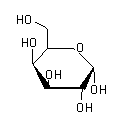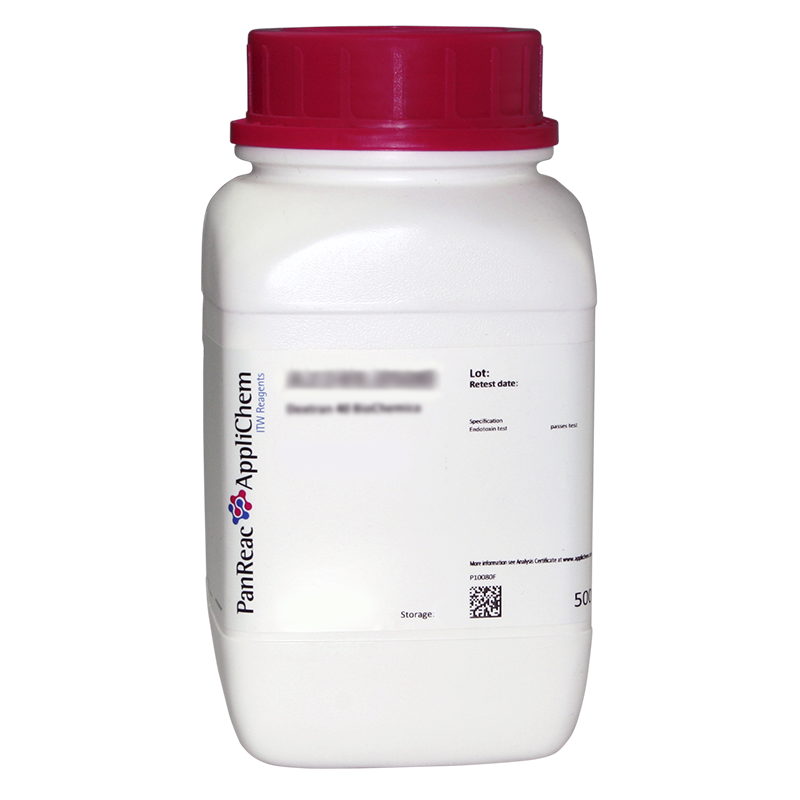Packs sizes (1)
| code | packaging size | price per unit | box price per unit | |
|---|---|---|---|---|
| Code & packaging | Price per piece | |||

|
code
142173.1211
|
packaging size
1 kg
|
price per unit
single
408,90€
|
box price per unit
|

Technical data
- Solubility:
- 650 g/L (H2O)
- Physical Description:
- Solid
- Product Code:
- 142173
- Product Name:
- D(+)-Galactose (Ph. Eur.) pure, pharma grade
- Specifications:
- Assay (HPLC; calc. anhydr. subst.): 97.0 - 102.0 %
Appearance of solution: passes test
Identity: passes test
Acidic/alkaline react. subst.: passes test
Sulfated ash: max. 0.1 %
Total aerobic microbial count: max. 100 CFU/g
Protein: max. 0.1 mg/mL
Water (K.F.): max. 1.0 %
Related subst. (HPLC)
Total impurities: max. 2.0 %
Each individual impurity: max. 0.3 %
Sum of impurity A + B: max. 1.0 %
- WGK:
- 1
- Storage:
- RT
- EINECS:
- 200-416-4
- CS:
- 29400000
Documents
Inquiry
Comments
Galactose (technical spelling), Gal for short, also galactose (traditional spelling) or also mucilage sugar, is a naturally occurring chemical compound from the group of monosaccharides (simple sugars). Galactose is found, for example, in most living organisms as a building block of oligo- and polycondensates of carbohydrates in various mucilages, from which the German name is derived. In comparison with sucrose, a 10% D-galactose solution has a sweetening power of 63%. - Properties - Galactose is a hexose and, like all hexoses, has the molecular formula C6H12O6. It is stereoisomeric (more precisely a C4 epimer) to glucose and belongs to the subgroup of aldohexoses. - Galactose, like most natural sugars, has D-configuration; L-galactose has only secondary importance in practice. If "galactose" is mentioned without any further name addition (prefix), D-galactose is always meant. - Each ring form and each stereoisomer is assigned its own CAS number: D-galactose: 59-23-4, 19217-07-3, 10257-28-0; L-galactose, 15572-79-9, 41846-90-6, 39392-65-9 - Behavior in aqueous solution - In aqueous solution, intramolecular ring closure occurs to some extent, resulting in equilibrium between the aldoform and the two ring forms (furanose form and pyranose form): At 20 °C, D-galactose dissolved in water is 32% in the α-pyranose form, 64% in the β-pyranose form, 1% in the α-furanose form, and 3% in the β-furanose form. - Equilibrium composition of galactose in aqueous solution at 20 °C - Specific rotation values - α-D-galactopyranose (= six-ring): [α]20D = +150.7° - β-D-galactopyranose: [α]20°/D = +52.8° - Galactose shows mutarotation. Rotation value of aqueous solution: [α]20°/D = +80.2° - Energy metabolism - Through epimerization, galactose is made available for glycolysis in a multi-step process. The following reaction steps are undergone: Galactokinase (GK, EC 2.7.1.6) is used to phosphorylate galactose (1) to galactose-1-phosphate (2) with ATP consumption. In the next step, the enzyme galactose-1-phosphate uridyltransferase (GALT, EC 2.7.7.12) converts the reactant with the participation of UDP-glucose (3): UDP-galactose (4) and glucose-1-phosphate (5) are formed. This enzyme is defective in galactosemia. Glucose-1-phosphate can be isomerized to glucose-6-phosphate (6), an intermediate of glycolysis, by the enzyme phosphoglucomutase (PGM, EC 5.4.2.2). In addition, glucose-1-phosphate together with UTP (uridine triphosphate) can be regenerated to UDP-glucose by UDP-glucose pyrophosphorylase (EC 2.7.7.9). The enzyme UDP-glucose 4-epimerase (UGE, EC 5.1.3.2) ensures that UDP-glucose can be regenerated from UDP-galactose. It can be used again for the reaction in the second step or glycogen biosynthesis. - Occurrence - Galactose, in addition to being a monosaccharide, also occurs as a building block in di- (e.g., lactose), oligo- (e.g., raffinose), and polysaccharides (e.g., agarose). It is also a component of proteoglycans and glycolipids. Via UDP-galactose, the organism provides sufficient starting material for this purpose even in the case of a galactose-free diet. - In the lactating mammary gland, lactose is made available from UDP-galactose and glucose with the help of lactose synthetase in breast milk as an important energy source for infants. Lactose is cleaved into glucose and galactose in the small intestine by the enzyme lactase and supplied to energy metabolism. - Uses - Galactose is used as a dietary supplement or sugar substitute. - Galactose as "brain sugar" - Galactose serves as an insulin-independent energy source for the brain and thus supports both the ability to concentrate and memory performance. This is particularly relevant in patients with neurodegenerative diseases, as they often show insulin resistance. Studies in rats show the positive effects of galactose for the treatment of cognitive deficits and the potential of galactose in the treatment of neurodegenerative diseases.[9] However, other studies showed the opposite effect, according to which the chronic intake of galactose just accelerates aging and neurodegeneration in mice and rats. One difference between the studies is that in the one with the beneficial effect, galactose was administered orally to the animals, whereas in the one with the detrimental effect, it was injected subcutaneously. - Galactose and Diabetes - Because of galactose's insulin-independent cellular uptake, it has little effect on blood glucose levels. The glycemic index of galactose is 20 (glucose=100). As early as the 1930s, doctors at the Charité hospital in Berlin therefore successfully treated diabetes patients with galactose as a sugar substitute. - Galactose in sports - Galactose is also used in the body for the production of glycoproteins and the detoxification of ammonia. Therefore, galactose is used as a dietary supplement in sports during or after exercise. During exercise, ammonia is continuously formed, which is associated with a decrease in performance. By taking galactose, the toxin is transported out of the cell faster and the muscle remains more efficient and can also recover better. - Disease - A hereditary disease in which affected individuals cannot utilize galactose at all due to an enzyme defect is called galactosemia. It comes on immediately after birth. - Studies show that chronic overdose of D-galactose can increase brain aging in mice through increased inflammation and oxidative stress.D-Galactose is an aldohexose that occurs naturally in the D-form in lactose, cerebrosides, gangliosides, and mucoproteins. In humans, absorption of galactose from food is mediated by Na/Glucose co-transporters. The monosaccharide is absorbed in the small intestine and catabolised in the liver. Galactose is converted through the Leloir pathway to galactose-1-phosphate, then to glucose-1-phosphate, and glucose-6-phosphate which can enter the glucose metabolism. Mutation of any of the enzymes of the conserved Leloir pathway can result in clinical deficiencies known as galactosemias. Research and applications: D-Galactose serves as substrate in enzyme studies (1, 2). Chronic D-Galactose exposure induces neurodegeneration in mice and Drosophila and has therefore been used as an aging model (3). Galactose might serve as a chaperone of alpha galactosidase and is therfore tested in treatments of the Fabry disease (4). The monosaccharide is used to some extend as a sweetener and dietary supplement. It is also used as an ultrasound contrast agent as the absorption by organs or tissues of the body is rather slow for certain preparations of Galactose.


